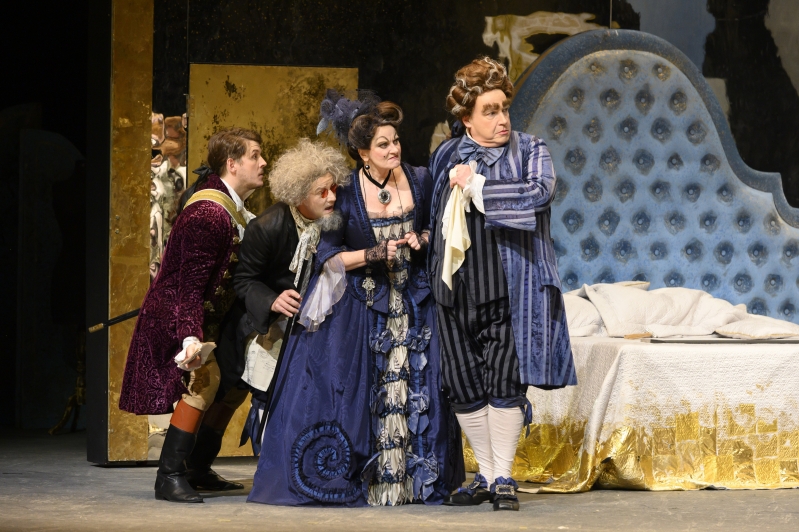This February, Welsh National Opera brings you love, laughter and tangled affairs as we revive our beautiful, period-set production of Mozart’s The Marriage of Figaro. It’s supposed to be the happiest time of Figaro and Susanna’s lives as their wedding day is upon them, however, Count Almaviva wants the bride-to-be for himself despite already being married. Humour, wit and mistaken identities are set against beautiful melodies which keep our audiences coming back for more. Even if you are one of the many, many opera-goers who are familiar with the story, there may be some things you don’t know about this Mozart classic…

Widely considered one of the greatest opera’s ever written, The Marriage of Figaro is one of three world-renowned collaborations between composer Wolfgang Amadeus Mozart and Librettist Lorenzo Da Ponte. They also worked together on Don Giovanni and Così fan tutte.
Da Ponte lived a rather scandalous life; he was banished from Venice for 15 years for running a brothel and was arrested for debt no less than 30 times in three months, resulting in him fleeing to New York. In The Big Apple, he started an opera company which was the predecessor of the New York Academy of Music and The Metropolitan Opera.
The Marriage of Figaro is based on a French play by the name of La Folle Journée, ou Le Mariage de Figaro (The Mad Day, or the Marriage of Figaro), written by Pierre-Augustin Caron de Beaumarchais in 1778. The play was seen as controversial for its time and had its first public appearance just two years before the opera. Contrary to popular belief, no music was written prior to obtaining the Emperor’s permission to turn the subversive French play into an opera.

The Marriage of Figaro shares characters with its prequel, The Barber of Seville; the most famous version being Rossini’s, which was written 30 years later. The sequel, Figaro gets a Divorce¸ has a libretto written by former WNO Artistic Director David Pountney and music by Elena Langer; WNO premiered the work in February 2016 at our home venue, Wales Millennium Centre.
At the time of its Viennese premiere in 1786, The Marriage of Figaro was only moderately successful. Although, by the third performance the encores had almost doubled its performance time.
Composed just five-and-a-half years before his untimely death, The Marriage of Figaro premiered when Mozart was at the height of his career. The period between Figaro and his death is regarded as his late or mature period, during which he composed some of his best work, including Don Giovanni, Così fan tutte, The Magic Flute, and Symphonies Nos 40 and 41 (known as the Jupiter Symphony).

As with any opera by Mozart, The Marriage of Figaro is full of recognisable music, most notably the Overture; it was used during the scene in The King’s Speech where King George VI (Colin Firth) recites Hamlet’s ‘to be or not to be’ without stuttering and in the classic ‘80s film comedy Trading Places. It was also used in the original Willy Wonka & the Chocolate Factory, when Willy Wonka (Gene Wilder) plays the opening of the overture to unlock the famous chocolate factory doors.
To hear the Overture for yourself, along with other well-known pieces such as Cherubino’s Act Two aria Voi che sapete and Figaro and Susanna's opening duet Cinque... dieci... venti, then join us this coming Spring as we open in Cardiff then visit venues across Wales and England.



